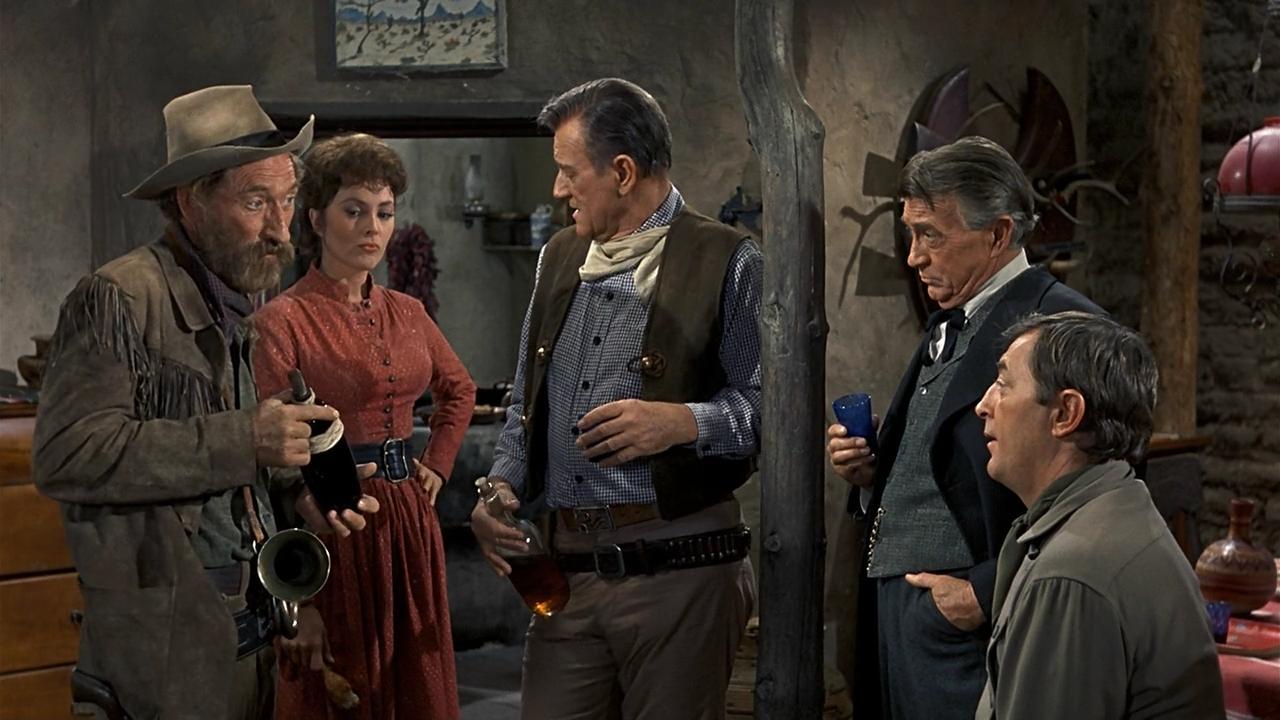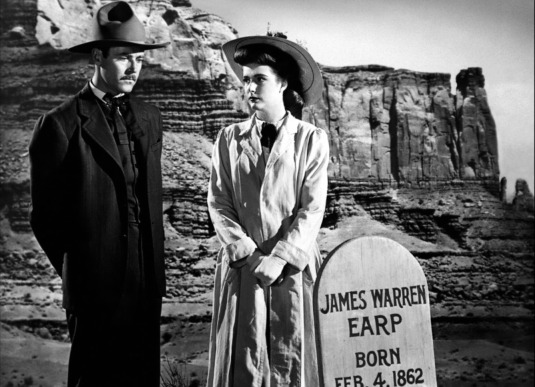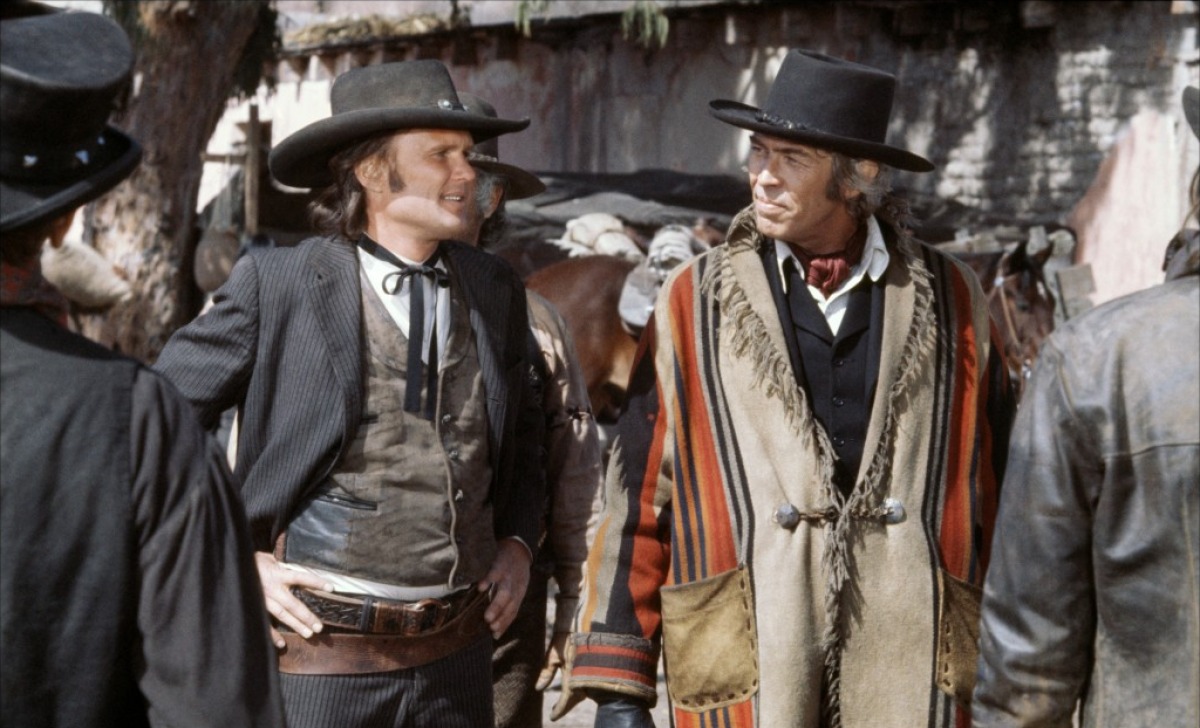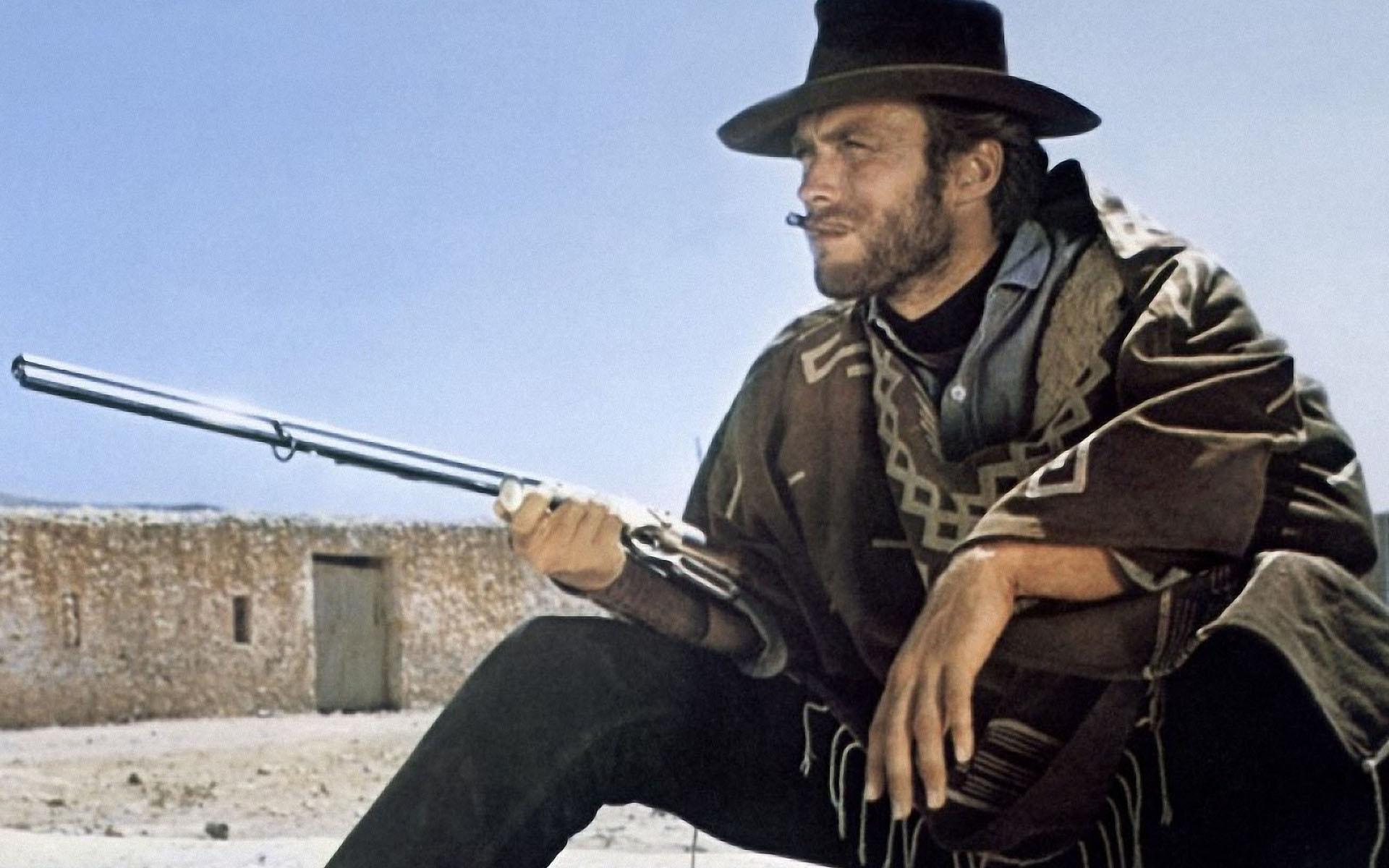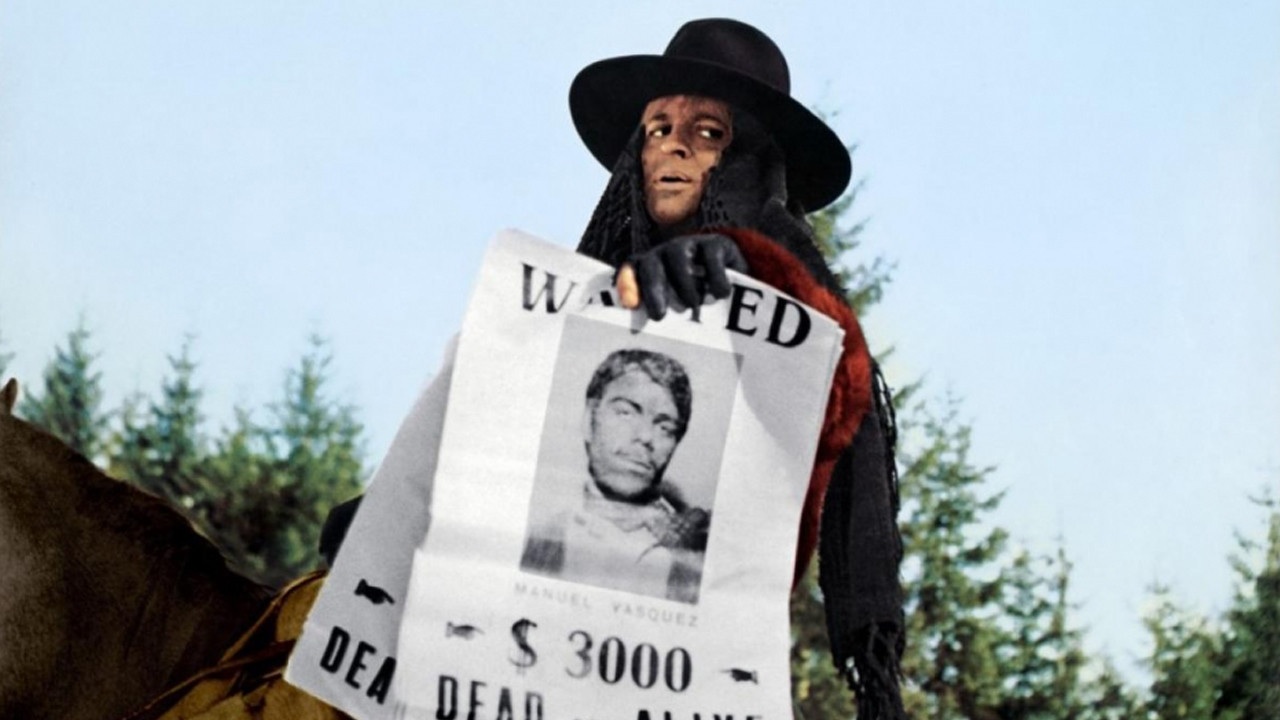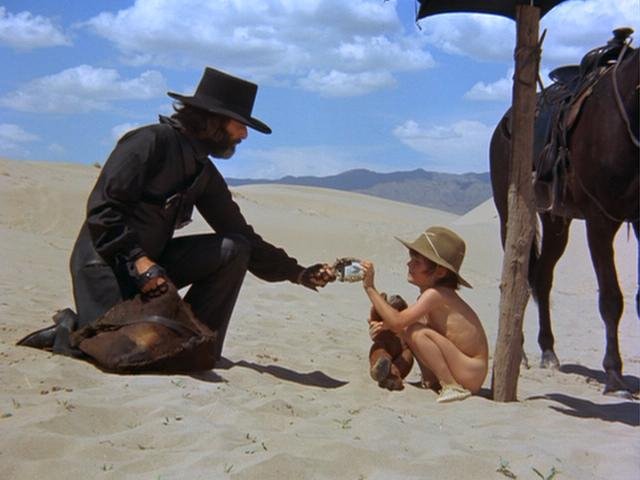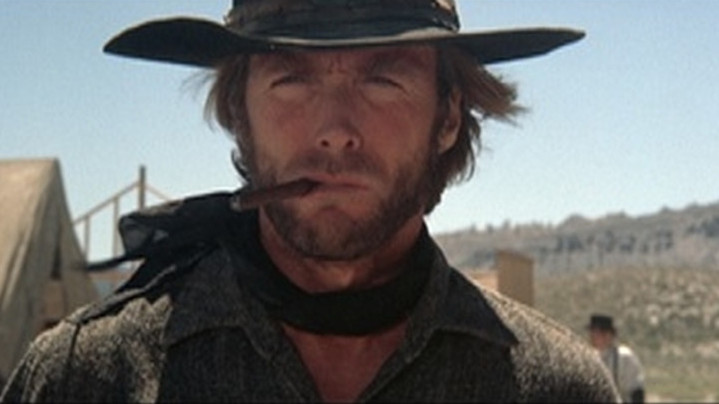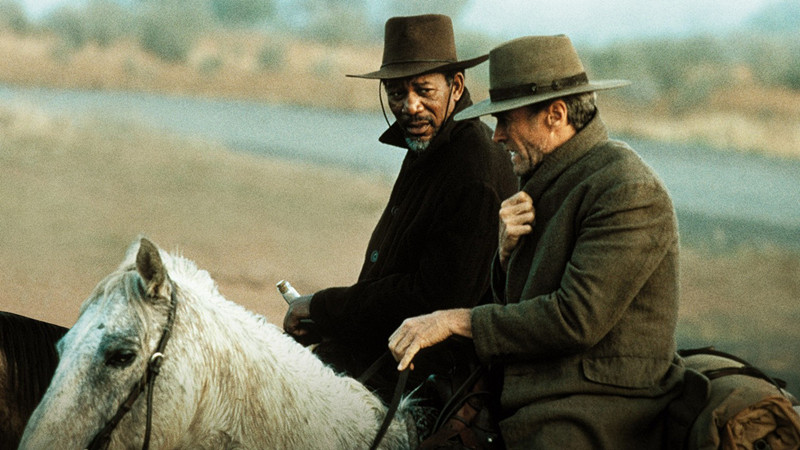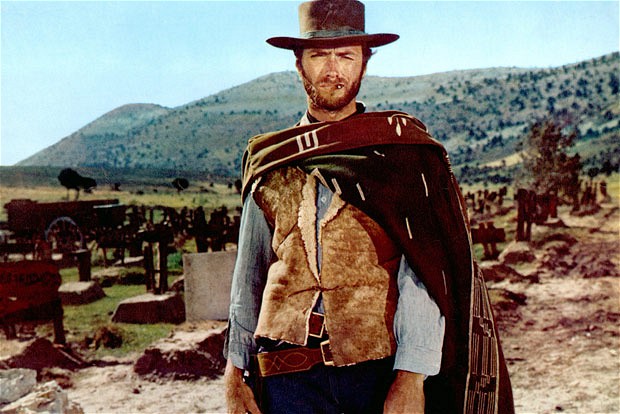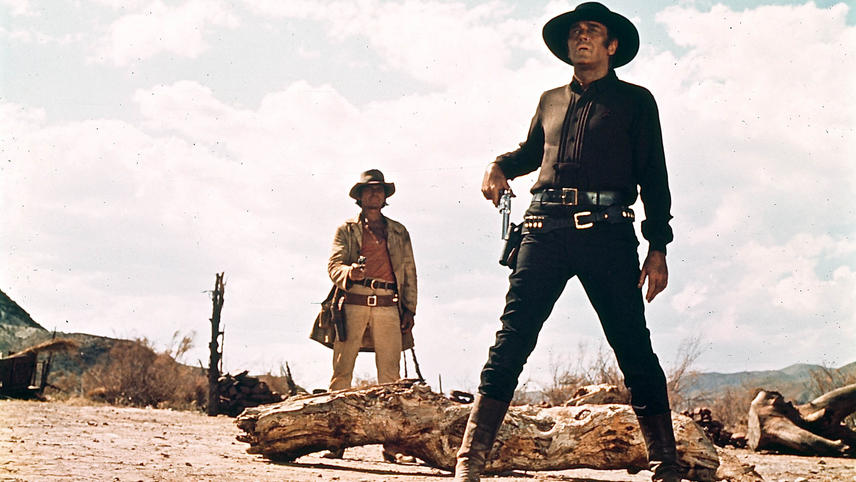10. El Dorado (1966)
El Dorado is one of three Howard Hawks westerns based around the similar scenario of an unlikely band consisting of veteran John Wayne, an inexperienced young gunfighter, and an alcoholic former lawman. The first was Rio Bravo in 1959, the last was Rio Lobo in 1970. Sandwiched in between is this, the best and most consistently entertaining of the three. James Caan and Robert Mitchum complete the cast. The film has a comic tone, but that only masks an emotional core. And the film is a perfect example of Hawks’ themes of solidarity in the face of unfavourable odds, and the importance and honour of professionalism.
9. My Darling Clementine (1946)
This is the definitive screen version of real life legends Wyatt Earp, Doc Holliday, and the events culminating in the Gunfight at the OK Corral. Unlike other versions of the tale, this is a low key, subtle, and quite gentle take of how real life Earp became lawman of the town of Tombstone. Earp actually told his tale to director John Ford himself, with inevitable slant in his favour no doubt, and is played by Henry Fonda. Other versions of these events include the 90s movies Tombstone, with Kurt Russell, and Wyatt Earp, with Kevin Costner.
8. Pat Garrett and Billy the Kid (1973)
Yet another elegiac film lamenting the end of the old West, this time told through the story of the former friends turned adversaries of the title. Bob Dylan provides the score, and has a supporting role, and the soundtrack includes Knockin’ on Heaven’s Door. Sam Peckinpah’s film is brutal and beautiful, and contains quite savage imagery, in particular during the opening scenes where live chickens are buried up to their necks to be used as target practice. Kris Kristofferson plays Billy, and James Coburn plays Garrett, and the film is a slow meditation, rather than a fast paced action film.
7. For a Few Dollars More (1965)
Sergio Leone’s sequel to his ground-breaking A Fistful of Dollars is longer, more accomplished, and provides the first example of a complex three way dynamic between heroes and villain which the director further explored in The Good, the Bad, and the Ugly, and Once Upon a Time in the West. Clint Eastwood’s Man with No Name teams up with Lee Van Cleef’s bounty hunter to foil a gang of bank robbers led by the brilliant Italian actor Gian Mario Volante. Ennio Morricone’s iconographic theme has been reborn in dance remixes, and the film is filled with gallows humour and moments of pathos; especially the extraordinary moment where Volante plays with a dying beetle while he listens to the sound of his men dying in a gunfight outside.
6. The Great Silence (1968)
This subversive Spaghetti western is one of the bleakest films ever made. Its hero is the brooding, silent type – literally. Having been made mute by a horrific attack on him as a child, he is now working as a bounty hunter, and is hired to protect a town beleaguered by the policies of the local banker and property owner. The finale is a downbeat, brutal conclusion to the film, and was said by the director Corbucci to be an allegory for the contemporary assassinations of Martin Luther King, Malcolm X, and Che Guevara. Ennio Morricone provides one of his best soundtracks.
5. El Topo (1970)
One of the original midnight cult movies, endorsed by John Lennon among others, Jodorowsky’s incredible film is packed full of extraordinary and surreal images. It begins as an (almost) straightforward western, with a black clad gunslinger saving some people from a vicious and perverse gang, but then morphs into an examination of the meaning of life, religion, and seemingly a million other things. No amount of words can adequately describe El Topo because the experience of it is not in words, but in its imagery.
4. High Plains Drifter (1973)
Clint Eastwood rides into town and may, or may not be, the ghost of the Sherriff murdered when the cowardly townsfolk stood by and watched him whipped to death by three gunslingers, who incidentally are out of jail and coming back to take their revenge. He is hired to protect the town, but not before he gets revenge of his own on those he feels are responsible for his own past trauma. This was the first Western Eastwood directed, and is a stylistic homage to Sergio Leone. It is also indebted to Don Siegel, who directed him in The Beguiled, Coogan’s Bluff, and Dirty Harry.
3. Unforgiven (1992)
Eastwood reportedly held onto the script by David Peoples for ten years until he felt old enough to portray the retired gunfighter William Munny. Now working as a barely successful farmer, Munny is forced to take on the hunt for two cowboys accused of maiming and disfiguring a prostitute. The film, like so many on the list, has a revisionist stance, and examines the mythology of the Old West and the macho characters who epitomise it. It is Eastwood’s last western (to date).
2. The Good, the Bad, and the Ugly (1966)
Ennio Morricone’s iconic score, which everyone can sing whether they have seen the film or not, puts The Good, the Bad, and the Ugly near the top of any list of great Westerns. In fact, such is the mastery of the cinematic technique displayed by director Sergio Leone, that the film frequently comes near the top of any great film list, Western or not. Eastwood and Van Cleef return in this third of the Man with No Name/Dollars trilogy, and are joined by Eli Wallach to complete the trio of the title. Their double crossing search for buried gold during the Civil War culminates in the ultimate quick draw gunfight in the middle of a huge cemetery. The battle scenes and those set in the prisoner of war camp provide some moments of pathos amidst the nihilistic violence.
1. Once Upon a Time in the West (1968)
Leone’s epic is an explicit homage to the America Western. It was written in conjunction with two Italian greats, Bernardo Bertolucci and Dario Argento, who compiled the story out of elements lifted from the hundreds of Westerns they watched as research. The film has one of the longest opening titles scenes in film history; where three gunmen wait for Charles Bronson’s character of Harmonica to show.
Leone originally wanted the good, bad, ugly trio of Eastwood, Van Cleef, and Wallach to play the gunmen, so that he could kill them off and draw a line between this and the Dollars trilogy. Apparently only Eastwood declined. Henry Fonda plays the main villain, a blue eyed child killer; and the film has several incredible crane shots, none more impressive than in the moment when the fate of Harmonica’s brother is revealed. Once again, Ennio Morricone provides the score, proving he is as much a presence in the history of the Western as any director or star. This is the perfect Western; epic in scale, romantic, dark, elegiac, with some exciting action, and in places very, very funny.
Author Bio: James Newton is an Associate Lecturer at the University of Kent, and at Canterbury Christ Church University in the UK. He teaches film, television, and digital media. He is also an independent filmmaker, and co-organiser of the Waves of Horror film festival. Follow him on Twitter @JamesEdNewton.
